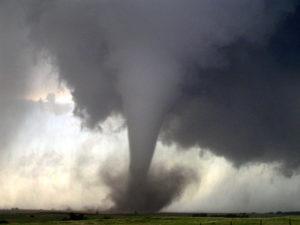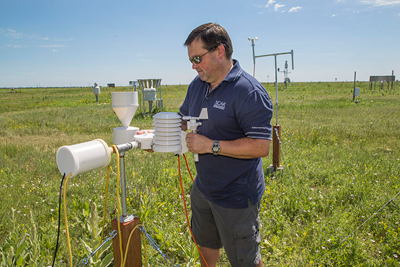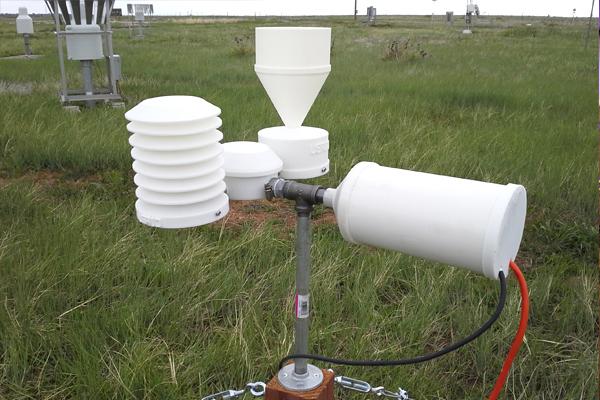 Do you ever think about what people did before sophisticated weather-predicting technology existed? In the US at least, we have a bit of a weather obsession – just take a look at the Weather Channel sometime, with its lineups of shows about natural disasters, potential natural disasters, historical natural disasters, and all manner of weather-related phenomena. I admit that I sometimes spend an excessive amount of time on weather websites – the technology is just too cool. There’s virtually nothing we can’t find out about what’s happening in our atmosphere at any given time.
Do you ever think about what people did before sophisticated weather-predicting technology existed? In the US at least, we have a bit of a weather obsession – just take a look at the Weather Channel sometime, with its lineups of shows about natural disasters, potential natural disasters, historical natural disasters, and all manner of weather-related phenomena. I admit that I sometimes spend an excessive amount of time on weather websites – the technology is just too cool. There’s virtually nothing we can’t find out about what’s happening in our atmosphere at any given time.
Besides being cool, our current weather-detecting technology keeps us safer than we’ve ever been before. Forecasters can tell us not only when a nasty storm is coming, but the exact minute it’ll arrive at our particular location. Hurricanes can be predicted days in advance, with every change in direction or intensity reported immediately.
Not every location is as fortunate, though. In many developing countries, weather stations are scarce or outdated, often lacking the resources to update their equipment or replace broken parts, meaning that residents get very little warning as to impending natural disasters. As many of these areas are especially prone to flooding, the lack of forewarning can have devastating impact.

A newly installed weather station at the Salvation Army’s College of Biomedical Sciences in Chikankata, Zambia [Image: Martin Steinson]
A year later, the first stations are in place. Five weather stations, mostly 3D printed, have been installed across Zambia: three next to radio stations that will broadcast the weather data to surrounding communities; one near a hospital; and one near the headquarters of Zambia’s meteorological department. At this time, the stations are beginning to gather and transmit data on rainfall, temperature, wind and more.
Not only do the stations potentially save lives through advance warning of natural disasters, but they provide much-needed information to local subsistence farmers, helping them to better plan the best times to plant, fertilize and harvest.
Kucera and co-project-lead Martin Steinson installed the five stations earlier this year, and the project will soon be taken over by the Zambian Meteorological Department, whose goal is to build a network of 100 weather stations across the country. They’ll be equipped with 3D printers, materials, and the training required to build, maintain and upgrade the network of stations at any time. In addition to their 3D printed construction, the stations are operated by inexpensive, easily procured sensors and Raspberry Pi computers. All of it is open source and easily customizable to the needs of any particular region.“It’s a major opportunity to provide weather information that farmers have never had before,” said NCAR scientist Paul Kucera, who has acted as one of the leads on the project. “This can literally make the difference when it comes to being able to feed their families.”
“If you want a different kind of wind direction gauge or anemometer, or you just need to replace a broken part, you can just print it out yourself,” said Steinson. “Our role is to make this as accessible as possible. This is entirely conceived as an open-source project.”
The data gathered by the weather station, in addition to being accessible to local meteorologists, will be transmitted wirelessly to NCAR, who will develop a system of one-to-three-day regional forecasts using their own Weather Research and Forecast (WRF) computer model. Eventually, the forecast system will be transferred to the Zambian Meteorological Department as well; the ultimate goal is for the country to be able to have a sustainable, quality weather forecasting system that can be entirely run internally.
The project’s next goal will be to install similar weather networks elsewhere in Africa and in other developing regions like the Caribbean. The need is dire: right now, Africa has about eight times lower the density of weather stations recommended by the World Meteorological Organization. The cost of building weather stations has prohibited these networks from being expanded or improved thus far: the construction of a single station can cost anywhere from $10,000 to $20,000. In contrast, the 3D printed stations cost about $300 to build – plus repairs and replacements will cost next to nothing.
Imagine all the lives that can be saved simply by providing people with the means to forecast natural disasters ahead of time, and thus take preventative action. In addition, the global weather-reporting network will be positively affected as data from previously off-the-grid places is detected and incorporated into the massive swirl of weather systems that all affect the global atmosphere.“We’re hearing a lot of interest in using this technology in other countries,” Kucera said. “It’s really quite a return on investment.”
Discuss further in the 3D Printed Parts for Weather Stations forum over at 3DPB.com.
[Source: UCAR]
Subscribe to Our Email Newsletter
Stay up-to-date on all the latest news from the 3D printing industry and receive information and offers from third party vendors.
You May Also Like
3D Printing Unpeeled: New Arkema Material for HP, Saddle and Macro MEMS
A new Arkema material for MJF is said to reduce costs per part by up to 25% and have an 85% reusability ratio. HP 3D HR PA 12 S has been...
3D Printing News Briefs, January 20, 2024: FDM, LPBF, Underwater 3D Printer, Racing, & More
We’re starting off with a process certification in today’s 3D Printing News Briefs, and then moving on to research about solute trapping, laser powder bed fusion, and then moving on...
3D Printing Webinar and Event Roundup: December 3, 2023
We’ve got plenty of events and webinars coming up for you this week! Quickparts is having a Manufacturing Roadshow, America Makes is holding a Member Town Hall, Stratafest makes two...
Formnext 2023 Day Three: Slam Dunk
I’m high—high on trade show. I’ve met numerous new faces and reconnected with old friends, creating an absolutely wonderful atmosphere. The excitement is palpable over several emerging developments. The high...

































